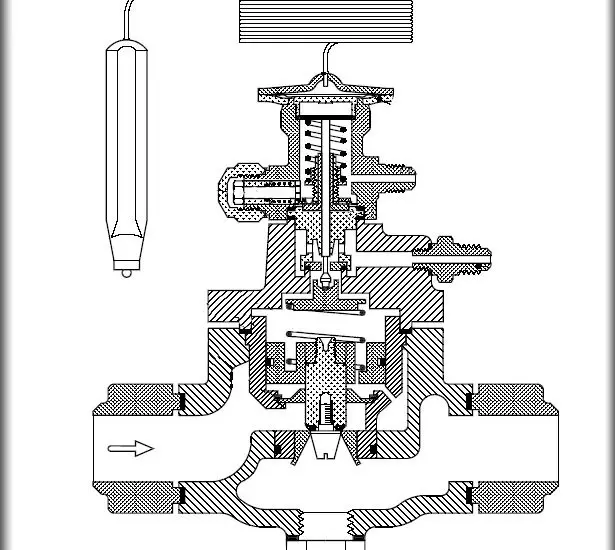Understanding the expansion valve working principle is not only essential for engineers and technicians but also for anyone interested in cooling systems. This guide breaks down complex concepts into understandable terms, giving you a clear insight into how this vital component functions.

Table of Contents
What is an Expansion Valve?
The expansion valve is a vital component in a refrigeration system. It serves as a regulating device that controls the amount of refrigerant flowing into the evaporator. By understanding its working principle, you can better appreciate how it helps in cooling processes.
Expansion Valve Working Principle
Expansion valve working principle is an intricate process that regulates the flow of refrigerant within cooling systems like air conditioners and refrigerators. Let’s dive into a more comprehensive explanation of how it functions, breaking down each stage:
1. Pressure Reduction
The pressure reduction phase is the initial step in the process. When the high-pressure liquid refrigerant leaves the condenser, it’s still at a temperature and pressure too high for effective cooling in the evaporator. The expansion valve acts as a restricting orifice, reducing the pressure as the refrigerant passes through it.
Why is Pressure Reduction Important? Lowering the pressure of the refrigerant serves two primary purposes:
It brings the refrigerant to the optimal pressure level where it can effectively absorb heat in the evaporator.
It aids in lowering the temperature of the refrigerant, preparing it for the next stage.
2. Temperature Regulation
As the pressure of the refrigerant drops, its temperature decreases as well, according to the principles of thermodynamics. This drop in temperature is critical for the next stage of the cooling process.
Why is Temperature Regulation Important? The temperature reduction ensures that the refrigerant is at the right temperature to absorb the maximum amount of heat from the space being cooled. If the refrigerant is too warm, it won’t absorb enough heat, leading to inefficiency in the cooling process.
Check out these other related articles…
Expansion Valve Troubleshooting: 4 Easy Steps to Follow
Electronic Expansion Valve Controller: A Comprehensive Guide
What is Expansion Valve? Your Ultimate Guide
Expansion Valve Symptoms: A Comprehensive Guide
Expansion Valve Bulb Position: A Comprehensive Guide
3. Flow Control
The expansion valve doesn’t just release refrigerant blindly into the evaporator. It carefully controls the amount of refrigerant entering the evaporator, adjusting according to the cooling load.
How Does Flow Control Work? There are sensors that monitor the temperature and pressure of the refrigerant as well as the demands of the cooling system. The expansion valve responds to these signals, opening or closing to allow more or less refrigerant through as needed.
Why is Flow Control Important? Proper flow control ensures that the right amount of refrigerant is always present in the evaporator. Too much or too little refrigerant can lead to various problems:
Too Much Refrigerant: If there’s too much refrigerant in the evaporator, it can lead to flooding, causing the compressor to work harder and leading to possible damage.
Too Little Refrigerant: On the other hand, too little refrigerant will result in inefficient cooling as there won’t be enough substance to absorb the necessary heat from the space.
Understanding the expansion valve’s working principle in detail provides insights into the vital role it plays in cooling systems. It’s not just about controlling refrigerant flow; it’s about carefully balancing pressure, temperature, and flow to create the perfect conditions for cooling. This delicate balance is what makes modern refrigeration and air conditioning possible, and the expansion valve is at the heart of it all.
